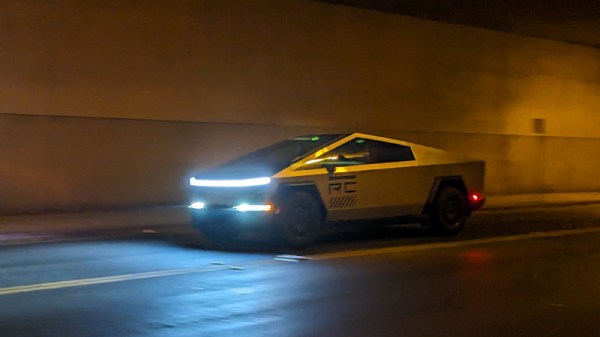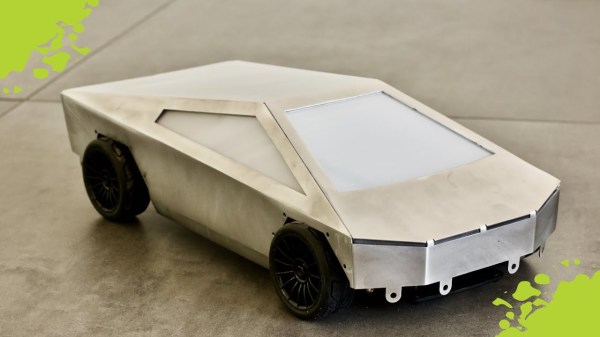When all else fails, blame it on the cloud? It seems like that’s the script for just about every outage that makes the news lately, like the Wyze camera outage this week that kept people from seeing feeds from their cameras for several hours. The outage went so far that some users’ cameras weren’t even showing up in the Wyze app, and there were even reports that some people were seeing thumbnails for cameras they don’t own. That’s troubling, of course, and Wyze seems to have taken action on that quickly by disabling a tab on the app that would potentially have let people tap into camera feeds they had no business seeing. Still, it looks like curiosity got the better of some users, with 1,500 tapping through when notified of motion events and seeing other people walking around inside unknown houses. The problem was resolved quickly, with blame laid on an “AWS partner” even though there were no known AWS issues at the time of the outage. We’ve said it before and we’ll say it again: security cameras, especially mission-critical ones, have no business being connected with anything but Ethernet or coax, and exposing them to the cloud is a really, really bad idea.
cybertruck6 Articles
Hackaday Links: February 4, 2024
Things may not have gone as planned last week for the flying cellphone on Mars, but just because Ingenuity‘s flying career is over doesn’t mean there’s no more work to do. NASA announced this week that it’s going to try a series of “wiggle” maneuvers on Ingenuity‘s rotors, in an attempt to get a better look at the damage to the blade tips and possibly get some clues as to what went wrong. The conjecture at the moment seems to be that a large area of relatively featureless terrain confused the navigation system, which uses down-facing cameras to track terrain features. If the navigation program couldn’t get a bead on exactly how far above the ground it was, it’s possible the copter came in too hard and caused the rotor tips to dig into the regolith. There seems to be some photographic suggestion of that, with what looks like divots in the ground about where you’d expect the rotor tips to dig in, and even scraps of material that look out of place and seem to be about the same color as the rotor blades. All this remains to be seen, of course, and we’re sure that NASA and JPL are poring over all available data to piece together what happened. As much as we hate to say goodbye to Ingenuity, we eagerly await the post-mortem.
Hackaday Links: December 3, 2023
Sure, it does less than originally promised, but hey — at least it’s more expensive. That about sums up Tesla fans’ feelings after the long-awaited Cybertruck reveal at the Texas Gigafactory on Thursday, where Elon Musk himself handed over the keys — or their Cyber equivalent — to a few new owners. These are expensive machines — $61,000 for the two-motor model, and just shy of $100,000 for the three-motor all-wheel-drive model with all the bells and whistles. That’s considerably more than they were expected to cost back in 2019, a fact which may be at least partially behind the drop in Tesla shares after the launch.
A Few New Car Owners Will Join The 48V Future
Leaving aside all the annoying hype surrounding Tesla’s Cybertruck, there’s a little technical detail which might be of more interest to readers than the automotive behemoth itself. It’s one of very few vehicles on the road to eschew 12 volt electrics for not 24 volt, but 48 volt. This has been one of those automotive innovations promised as just around the corner for many years, and it seems finally we’ll see it in practice.
The reason that there’s nothing new in the prospect of moving on from 12 volt electrics has been brewing for decades now. A typical car has plenty of motorized gadgets from seat adjusters to sunroofs, as well as at least one heated windscreen or other surface. These devices take a lot of power, and at the lower voltage require significant current to operate. The 48 volt system will require much less in the way of copper to get the power where it’s needed, so the surprise is that we’ve not yet seen it in run-of-the-mill vehicles from the likes of Ford or Volkswagen.
What we’re guessing is that other manufacturers will be watching from the sidelines as to whether 48 volt electrics cause any problems for the Tesla, and it’s not impossible we could see it becoming the new hotness. There are many choice words we could say relating to the hype around Tesla and its supposed level of innovation, but it could be that this time they’ve really been first with something the whole industry will go for. If so we should rejoice, because it’s likely to push down the prices of 48 volt lithium-ion packs.
Header image: Mliu92, CC BY-SA 3.0.
Truckla Gets An Open Source Charging Buddy
More than three years have passed since Tesla announced its Cybertruck, and while not a one has been delivered, the first Tesla truck, Truckla, has kept on truckin’. [Simone Giertz] just posted an update of what Truckla has been up to since it was built.
[Giertz] and friend’s DIT (do-it-together) truck was something of an internet sensation when it was revealed several months before the official Tesla Cybertruck. As with many of our own projects, while it was technically done, it still had some rough edges that kept it from being truly finished, like a lack of proper waterproofing or a tailgate that didn’t fold.
Deciding enough was enough, [Giertz] brought Truckla to [Marcos Ramirez] and [Ross Huber] to fix the waterproofing and broken tailgate while she went to [Viam Labs] to build Chargla, an Open Source charging bot for Truckla. The charging bot uses a linear actuator on a rover platform to dock with the charging port and is guided by a computer vision system. Two Raspberry Pis power handle the processing for the operation. We’re anxious to see what’s next in [Giertz]’s quest of “picking up the broken promises of the car world.”
If you want to see some more EV charger hacks, check out this Arduino-Based charger and the J1772 Hydra.
Continue reading “Truckla Gets An Open Source Charging Buddy”
The Next Best Thing To A Cybertruck
While production of the Tesla Cybertruck won’t start production until 2021 (at the earliest), you can always try to build your own. Unless you have a really big spare parts drawer, though, it probably won’t be full sized, but you can at least build a model if you have a shop as well-stocked as [Emiel]. He took some time to build a model cybertruck out of a single sheet of aluminum. (Video, embedded below. You might want to turn on subtitles.)
This project is a great example of the fact that some projects that seem simple on the surface require some specialized tools to get just right. To start, the aluminum sheet was cut with a laser to get into the appropriate shape and include details like windows, and the bending points were marked with an engraver to help the bending process along. The one tool that [Emiel] was missing was a brake, but he got great results with a set of metal bending pliers.
Finishing the model didn’t go particularly smoothly, either. He had planned to braze the metal together, but the heat required kept warping the body panels. The solution was to epoxy it together and sand down the excess, and the results are hopefully stronger than brazing would have been since he added a cloth to the epoxy for extra strength. The windows are made from polycarbonate (and didn’t break during the durability test), and we hope that when [Emiel] is ready to put in a motor he uses one of his custom-built electric motors. Continue reading “The Next Best Thing To A Cybertruck”















